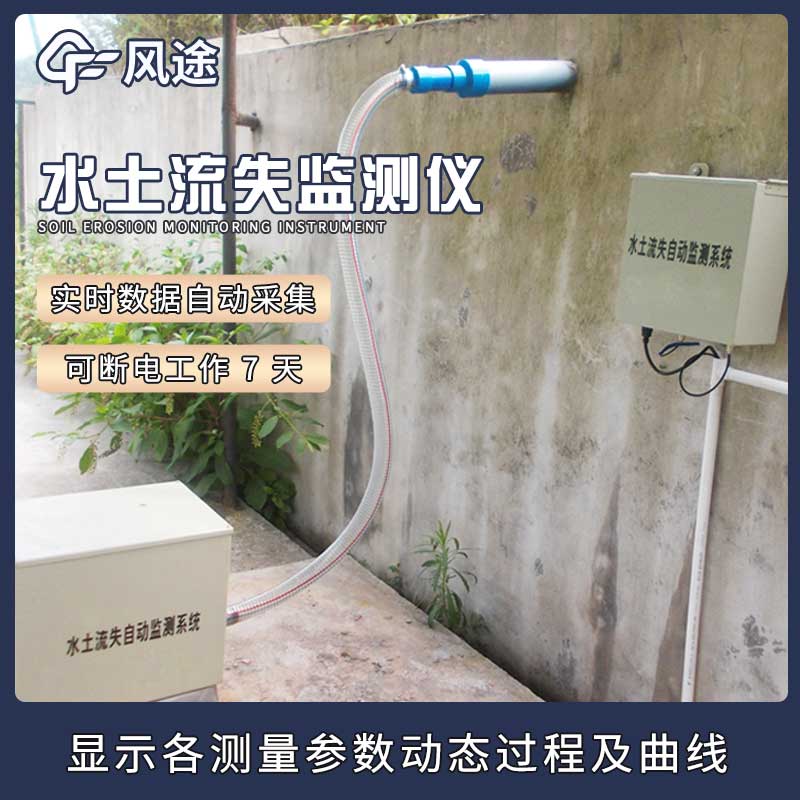Shandong Fengtu IOT Technology Co., Ltd
Sales Manager:Ms. Emily Wang
Cel,Whatsapp,Wechat:+86 15898932201
Email:info@fengtutec.com
Add:No. 155 Optoelectronic Industry Accelerator, Gaoxin District, Weifang, Shandong, China

Sales Manager:Ms. Emily Wang
Cel,Whatsapp,Wechat:+86 15898932201
Email:info@fengtutec.com
Add:No. 155 Optoelectronic Industry Accelerator, Gaoxin District, Weifang, Shandong, China
time:2025-06-24 09:25:51 source:Weather Station viewed:263 time
Mining operations are like a double-edged sword: while fueling economic growth, they leave behind environmental challenges, with slope instability and soil erosion being the most pressing. Mountain landslides are no trivial matter—accidents such as equipment burial and worker entrapment occur frequently. When rainwater erodes the slopes, massive sediments flow into rivers, clogging downstream reservoirs and drastically reducing soil fertility in surrounding farmlands. These issues have driven mining professionals to seek solutions, leading to the introduction of Soil Erosion Monitoring systems for mine slope surveillance.
How the System Works
This system acts as a 24/7 "soil-water observer," relying on sensors as its "eyes and ears":
Rainfall sensors installed on slopes function like accountants tracking precipitation, precisely recording rainfall duration and intensity.
Flow sensors in runoff ditches monitor water velocity and volume, detecting sudden surges immediately.
Soil moisture and erosion sensors buried in the ground continuously assess soil "health," triggering alerts when water content anomalies or erosion signs are detected.
Data Flow and Processing
Data from sensors is aggregated by a collection unit, which organizes the information like a meticulous clerk. It then transmits data via 4G or wireless networks to a monitoring center’s processing platform. Mine technicians can view real-time slope conditions remotely, eliminating the need for on-site inspections.
Practical Applications and Impacts
Real-time Early Warning
Traditional manual inspections were inefficient and unable to respond to sudden storms. The automated system now notifies technicians of any soil erosion changes instantly. For example, increased runoff after heavy rain prompts immediate reinforcement, nipping risks in the bud.
Scientific Slope Stability Assessment
Instead of relying on experience, technicians use long-term monitoring data and professional models to calculate slope safety factors. Analyzing soil erosion and moisture trends helps predict landslide-prone areas, enabling proactive precautions.
Targeted Ecological Restoration
Post-mining restoration previously relied on intuition, yielding inconsistent results. Now, data guides strategies: severe erosion areas get deep-rooted tree species, and retaining walls are built in critical spots, optimizing resource allocation for better outcomes.
Remote Monitoring and Alerts
Technicians can access real-time data via mobile devices from anywhere. The system sets safety thresholds—if metrics like runoff exceed limits, it sends instant notifications via SMS or calls, ensuring preemptive action.
Soil Erosion Monitoring systems have transformed mine management, shifting from reactive measures to data-driven proactive strategies, and balancing economic development with environmental protection.

Park air quality monitoring station is an important part of urban garden construction in my country, and its main function is to monitor the concentration and distribution of air pollutants in parks. With the continuous acceleration of urbanization and the rapid growth of urban population, the probl...
Automatic weather station is a modern means of meteorological observation using IOT sensor technology as well as wireless transmission technology to collect, process and analyze meteorological elements, which is of great importance in social production. Due to its small size, low power consumption a...
Ultrasonic wind speed and direction sensor is an instrument for measuring wind speed and direction, which uses acoustic pulses to calculate wind speed and direction. This sensor can measure the instantaneous values of wind speed and direction simultaneously and supports multiple signal output method...
A GNSS monitoring station is a device that achieves high-precision positioning monitoring by using the global navigation satellite system. Its working principle relies on satellite navigation systems such as GPS and Beidou. It receives signals from multiple satellites to determine its own three-dime...